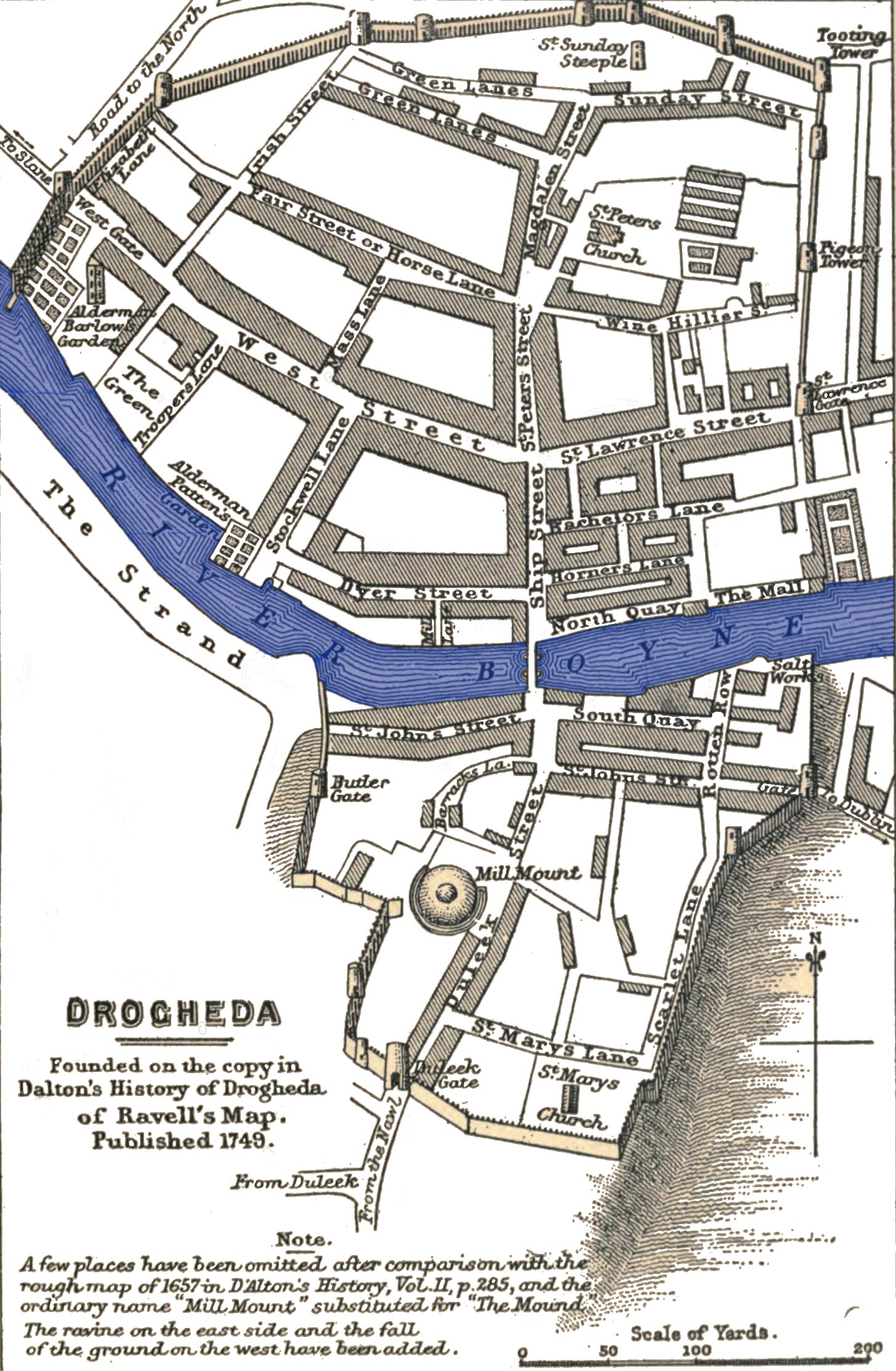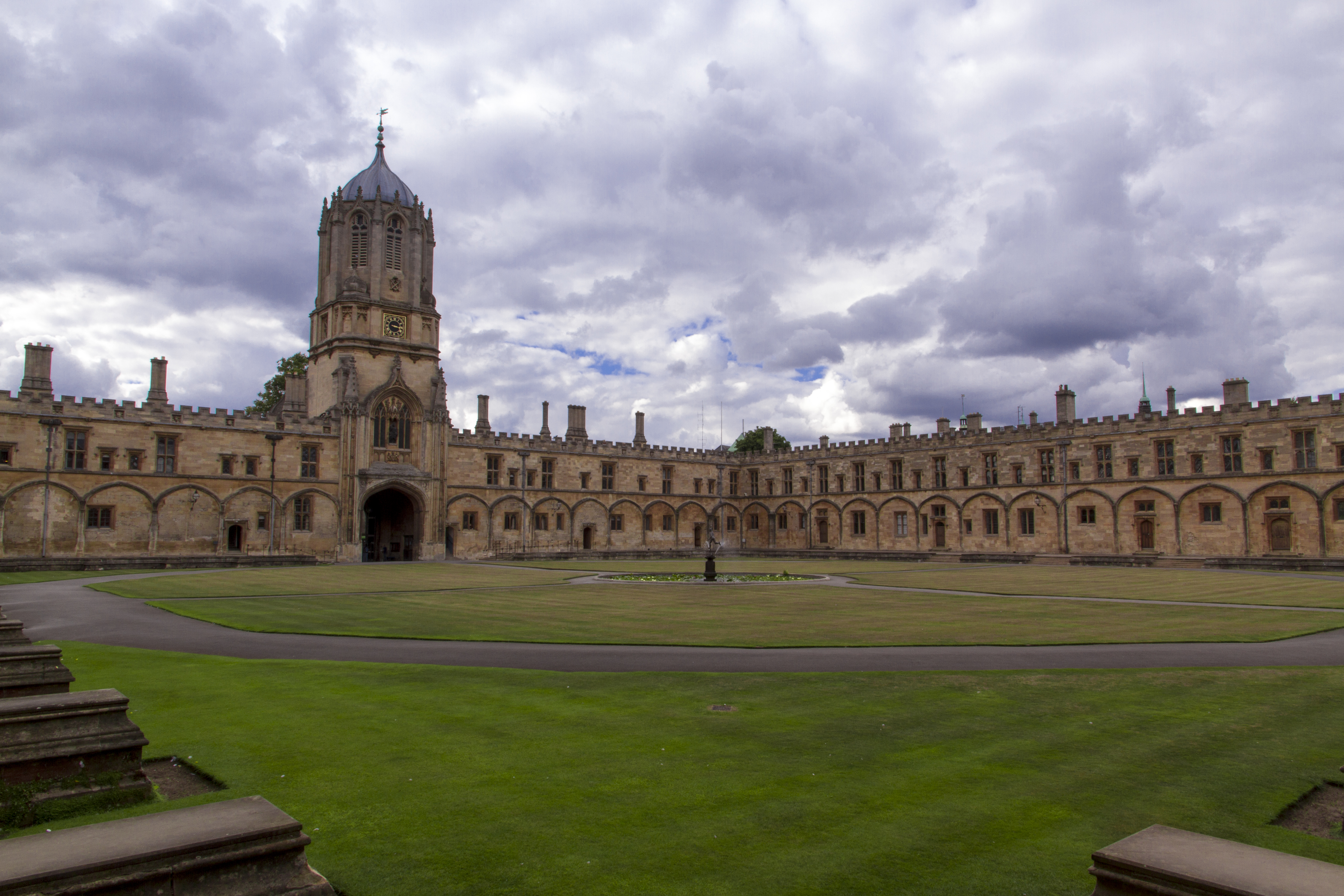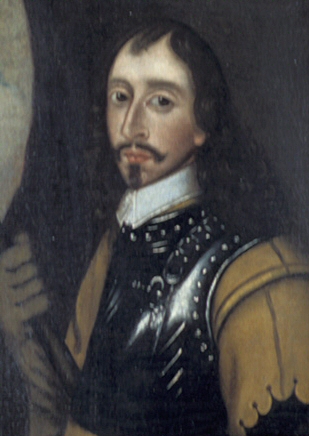|
John Hewson (regicide)
Colonel John Hewson, also spelt Hughson (died 1662), was a shoemaker from London and religious Independent who fought for Parliament and the Commonwealth in the Wars of the Three Kingdoms, reaching the rank of Colonel. Considered one of Oliver Cromwell's most reliable supporters within the New Model Army, his unit played a prominent part in Pride's Purge of December 1648. Hewson signed the death warrant for the Execution of Charles I in January 1649, for which he reportedly sourced the headsman, while soldiers from his regiment provided security. During the 1649 to 1660 Interregnum, he served as Governor of Dublin and MP for County Dublin until 1656. He then returned to England and was MP for Guildford before being elevated to Cromwell's Other House in 1658. As one of the surviving Regicides of Charles I, he was exempted from the Indemnity and Oblivion Act after the 1660 Stuart Restoration. He went into exile in the Dutch Republic, and is thought to have died in Amsterdam in 166 ... [...More Info...] [...Related Items...] OR: [Wikipedia] [Google] [Baidu] |
Charles I Of England
Charles I (19 November 1600 – 30 January 1649) was King of England, Scotland, and Ireland from 27 March 1625 until Execution of Charles I, his execution in 1649. He was born into the House of Stuart as the second son of King James VI of Scotland, but after his father inherited the English throne in 1603, he moved to England, where he spent much of the rest of his life. He became heir apparent to the kingdoms of England, Scotland, and Ireland in 1612 upon the death of his elder brother, Henry Frederick, Prince of Wales. An unsuccessful and unpopular attempt to marry him to the Spanish Habsburg princess Maria Anna of Spain, Maria Anna culminated in an eight-month visit to Spain in 1623 that demonstrated the futility of the marriage negotiation. Two years later, he married the House of Bourbon, Bourbon princess Henrietta Maria of France. After his 1625 succession, Charles quarrelled with the Parliament of England, English Parliament, which sought to curb his royal prerogati ... [...More Info...] [...Related Items...] OR: [Wikipedia] [Google] [Baidu] |
Battle Of Turnham Green
The Battle of Turnham Green took place on 13 November 1642 near the village of Turnham Green, at the end of the first campaigning season of the First English Civil War. The battle resulted in a standoff between the forces of King Charles I and the much larger Parliamentarian army under the command of the Earl of Essex. In blocking the Royalist army's way to London immediately, however, the Parliamentarians gained an important strategic victory as the standoff forced Charles and his army to retreat to Oxford for secure winter quarters. Prelude After the Battle of Edgehill, King Charles captured Banbury and was greeted by cheering crowds as he arrived in Oxford on 29 October. Charles' nephew and cavalry commander, Prince Rupert of the Rhine, swept down the Thames Valley, capturing Abingdon, Aylesbury and Maidenhead, from where he attempted, unsuccessfully, to capture Windsor from strong Parliamentary forces. After this, many officers wanted to open peace negotiations, contrary ... [...More Info...] [...Related Items...] OR: [Wikipedia] [Google] [Baidu] |
Siege Of Kilkenny
The siege of Kilkenny was the isolation and capture of the fortified capital of the Irish Confederates by the New Model Army of the English Parliamentarians in March 1650 during the conquest of Ireland by Oliver Cromwell. Background In August 1649, approximately one year after the end of the Second English Civil War, Oliver Cromwell brought the Commonwealth of England's Parliamentarian New Model Army to Ireland to reclaim control from the combined forces of the English Royalists and the Irish Confederates. After arriving in Ireland, Cromwell's forces struck hard and fast north of Dublin capturing Drogheda, Belfast, and Carrickfergus. Concurrently, Cromwell attacked and captured the southeastern port cities of Wexford and New Ross before the onset of winter. On 29 January 1650, taking advantage of a mild winter, Cromwell reinitiated his campaign in southern Ireland with the overall objective of capturing both the Confederate capital of Kilkenny and the fortified stronghold ... [...More Info...] [...Related Items...] OR: [Wikipedia] [Google] [Baidu] |
Arklow
Arklow (; ; , ) is a town in County Wicklow on the southeast coast of Ireland. The town is overlooked by Ballymoyle Hill. It was founded by the Vikings in the ninth century. Arklow was the site of one of the bloodiest battles of the 1798 rebellion. Its proximity to Dublin led to it becoming a commuter town with a population of 13,163 as of the 2016 census. Arklow is at the mouth of the River Avoca, the longest river wholly within County Wicklow. The town is divided by the river, which is crossed by the Nineteen Arches Bridge, a stone arch bridge linking the southern or main part of the town with the northern part, called Ferrybank. The Nineteen Arches Bridge is the longest handmade stone bridge in Ireland, and a plaque on the south end of the bridge acknowledges this. History The town's English name derives from ''Arnkell's Lág'' (Arnkell was a Viking leader; a "lág" (low) was an area of land). Its Irish name, ''Inbhear Mór'' or ''An tInbhear Mór'', means ''the large ... [...More Info...] [...Related Items...] OR: [Wikipedia] [Google] [Baidu] |
Siege Of Drogheda
The siege of Drogheda or the Drogheda massacre took place 3–11 September 1649, at the outset of the Cromwellian conquest of Ireland. The coastal town of Drogheda was held by the Irish Catholic Confederation and English Royalists under the command of Sir Arthur Aston when it was besieged by Parliamentarian forces under Oliver Cromwell. After Aston rejected an invitation to surrender, the town was stormed and much of the garrison was executed including an unknown but "significant number" of civilians. The outcome of the siege and the extent to which civilians were targeted is a significant topic of debate among historians. Background Since 1642, most of Ireland had been under the control of the Irish Catholic Confederation, who had taken much of the country in the aftermath of the 1641 Irish rebellion. In 1648, the Irish Confederates allied themselves with the English Royalists to oppose the English Parliamentarians. With his New Model Army, Oliver Cromwell landed in I ... [...More Info...] [...Related Items...] OR: [Wikipedia] [Google] [Baidu] |
Battle Of Maidstone
The Battle of Maidstone (1 June 1648) was fought in the Second English Civil War and was a victory for the attacking Parliamentarian troops over the defending Royalist forces. Background In May 1648, a significant part of the Royalist uprising gathered in Kent and Essex. The Kentish Royalists assembled outside Maidstone at Penenden Heath with over 10,000 men raised for the Earl of Norwich. The force then dispersed to hold various towns for the King including Gravesend, Rochester, Dover and Maidstone. Together with the rebellion in South Wales, this gathering constituted one of the main uprisings that marked the Second Civil War. The New Model Army had already been split in two and the larger part sent under Cromwell to deal with the rebellion in South Wales, leaving Sir Thomas Fairfax with a force of only 6,000 men. Fairfax marched on Maidstone with 4,000 veteran Parliamentary troops to recapture it from the defending 2,000 strong Royalist force within the town. Most of the Ro ... [...More Info...] [...Related Items...] OR: [Wikipedia] [Google] [Baidu] |
Siege Of Oxford
The siege of Oxford comprised the English Civil War military campaigns waged to besiege the Royalist controlled city of Oxford, involving three short engagements over twenty-five months, which ended with a Parliamentarian victory in June 1646. The first engagement was in May 1644, during which King Charles I escaped, thus preventing a formal siege. The second, in May 1645, had barely started when Sir Thomas Fairfax was given orders to stop and pursue the King to Naseby instead. The last siege began in May 1646 and was a formal siege of two months; but the war was obviously over and negotiation, rather than fighting, took precedence. Being careful not to inflict too much damage on the city, Fairfax even sent in food to the King's second son, James, and was happy to conclude the siege with an honourable agreement before any further escalation occurred. Oxford during the civil war The creation of the King's Oxford Parliament in January 1644 placed Oxford at the centre of ... [...More Info...] [...Related Items...] OR: [Wikipedia] [Google] [Baidu] |
Exeter
Exeter () is a city in Devon, South West England. It is situated on the River Exe, approximately northeast of Plymouth and southwest of Bristol. In Roman Britain, Exeter was established as the base of Legio II Augusta under the personal command of Vespasian. Exeter became a religious centre in the Middle Ages. Exeter Cathedral, founded in the mid 11th century, became Anglican in the 16th-century English Reformation. Exeter became an affluent centre for the wool trade, although by the First World War the city was in decline. After the Second World War, much of the city centre was rebuilt and is now a centre for education, business and tourism in Devon and Cornwall. It is home to two of the constituent campuses of the University of Exeter: Streatham and St Luke's. The administrative area of Exeter has the status of a non-metropolitan district under the administration of the County Council. It is the county town of Devon and home to the headquarters of Devon County Council. A p ... [...More Info...] [...Related Items...] OR: [Wikipedia] [Google] [Baidu] |
Siege Of Basing House
The siege of Basing House near Basingstoke in Hampshire, was a Parliamentarian victory late in the First English Civil War. Whereas the title of the event may suggest a single siege, there were in fact three major engagements. John Paulet, 5th Marquess of Winchester owned the House and as a committed Royalist garrisoned it in support of King Charles I, as it commanded the road from London to the west through Salisbury. The first engagement was in November 1643, when Sir William Waller at the head of an army of about 7,000 attempted to take Basing House by direct assault. After three failed attempts it became obvious to him that his troops lacked the necessary resolve, and with winter fast approaching Waller retreated back to a more friendly location. Early in 1644 the Parliamentarians attempted to arrange the secret surrender of Basing House with Lord Edward Paulet, the Marquess of Winchester's younger brother, but the plot was discovered. Parliamentary forces continue ... [...More Info...] [...Related Items...] OR: [Wikipedia] [Google] [Baidu] |
Siege Of Bristol (1645)
The Second Siege of Bristol of the First English Civil War lasted from 23 August 1645 until 10 September 1645, when the Royalist commander Prince Rupert surrendered the city that he had captured from the Parliamentarians on 26 July 1643. The commander of the Parliamentarian New Model Army forces besieging Bristol was Lord Fairfax. Prelude After reducing Bridgwater Fairfax and the New Model Army turned back to clear away the Dorsetshire Clubmen and besiege Sherborne Castle. On the completion of this task, it was decided to besiege Bristol. Siege On 23 August 1645 the New Model Army invested Bristol. On the night of 9/10 September, Fairfax's army stormed Bristol. Prince Rupert had long realised the hopelessness of further fighting. The lines of defence around the place were too extensive for Prince Rupert's small force and on 10 September he surrendered Bristol on terms. Prince Rupert was escorted to Oxford with his men, conversing as he rode with the officers of the es ... [...More Info...] [...Related Items...] OR: [Wikipedia] [Google] [Baidu] |
Siege Of Bridgwater (1645)
The Siege of Bridgwater took place in July 1645, during the First English Civil War, when a Cavalier, Royalist garrison surrendered to a Roundhead, Parliamentarian force under Thomas Fairfax, Sir Thomas Fairfax. After their victory at Battle of Naseby, Naseby in June, Fairfax and the New Model Army moved into Somerset, where they linked up with the Western Association Army led by Edward Massey. On 10 July, their combined force destroyed the last significant Royalist field army at Battle of Langport, Langport, clearing the way for an attack on Bridgwater. Siege operations began on 13 July; on 21st, Parliamentarian forces stormed the western part of the town. Many of the buildings were set on fire, and the garrison capitulated on 23 July; over 1,600 prisoners were taken, along with large quantities of weapons and other stores. The capture of Bridgwater meant Parliamentarian forces controlled a line of forts from the Bristol_Channel, Bristol to the English Channels, isolating ... [...More Info...] [...Related Items...] OR: [Wikipedia] [Google] [Baidu] |
Battle Of Langport
The Battle of Langport was a Parliament of England, Parliamentarian victory late in the First English Civil War which destroyed the last Cavalier, Royalist field army and gave Parliament control of the West of England, which had hitherto been a major source of manpower, raw materials and imports for the Royalists. The battle took place on 10 July 1645 near the small town of Langport, which lies south of Bristol. Campaign Taunton had been captured by the Parliamentarian army under the Robert Devereux, 3rd Earl of Essex, Earl of Essex in June 1644. After Essex's army was forced to surrender at Battle of Lostwithiel, Lostwithiel in Cornwall in September, the Royalists maintained a siege of Taunton, although the town was briefly relieved by Sir William Waller in late November. When determining strategy for 1645, Charles I of England, King Charles I had despatched George Goring, Lord Goring, George, Lord Goring, the Lieutenant General of Horse (cavalry), to the West Country with ... [...More Info...] [...Related Items...] OR: [Wikipedia] [Google] [Baidu] |


_p345_Map_of_Kilkenny.jpg)






